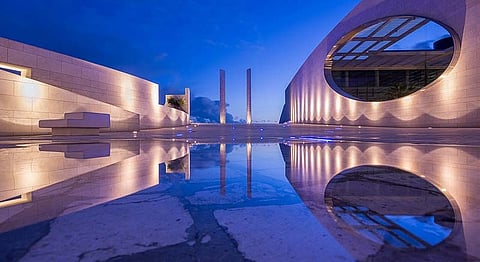
- #HGCREATORS
- #HGEXPLORE
- #HGVOICES
- #HGSHOP
- CAREERS
- ABOUT US
- CONTACT US

“Market forces do not make cities, they destroy them.”
Charles Correa is a name that is emblematic of contemporary architecture in India, and the passing of the 84-year-old architect in Mumbai late Tuesday due to a brief illness is a loss that is mourned by many, including those outside the architecture fraternity.
Honoured with the Padma Shri in 1972 and Padma Vibhushan in 2006, Charles was the chief architect of Navi Mumbai and later went on to be appointed the first chairman of the National commission on Urbanisation. His other work, ranging from the Mahatma Gandhi Memorial in Ahmedabad to the assembly of Madhya Pradesh and the Jawahar Kala Kendra in Jaipur, is varied and equally impressive; he was known for his inclination to issues related to urban planning and affordable housing, with a special focus on low-income housing.
”Market forces do not make cities, they destroy them,” he said in a message to governments and urban planners earlier this year when he was here to accept a Lifetime Achievement Award, making his critical opinion of the haphazard development of the financial capital of India pretty evident. Correa has also taught at several universities in India and abroad, and is immensely interested in how Indian cities work, “Our cities are among the greatest things that we have; they are part of the wealth of India. They are places of hope. The skills we need are urban skills – we never have to ask the World Bank to send us an expert because our cities already provide them.”
Correa’s impressive feats in architecture have hardly gone unnoticed either, with several of the most prestigious national and international awards to his name including the Aga Khan Award for Architecture, the Premium Imperiale of Japan and the Royal Gold Medal of the Royal Institute of British Architects (RIBA), which touted him as ‘India’s greatest architect’.
He also established the Urban Design Research Institute, Mumbai, in 1984, that is dedicated to protecting the environment and improving urban communities. Today, Homegrown remembers the legend with a look at 8 of his most captivating works.
I) Memorials at Aga Khan Palace, Pune
Aga Khan Palace itself is full of verdant lawns and Italian arches, and the gorgeous marble memorials for Kasturba Gandhi and Mahadev Bhai Desai here have been built by Charles Correa.

II) Champalimaud Center, Lisbon
This research and diagnostic centre located in Lisbon boasts of state-of-the-art facilities and is guided by some of the best scientists in the world. Interestingly, the location of the centre, where the river meets the Atlantic ocean, is the site where Henry the Navigator, Vasco de Gama and other great Portuguese explorers set off from to explore the unknown—a perfect metaphor, we think, for prospective discoveries of contemporary science today, as Correa emphasises.

III) Jawahar Kala Kendra, Jaipur
Dedicated to the late prime minister of India Jawaharlal Nehru, Jawahar Kala Kendra is an arts and crafts centre located in the city of Jaipur. Important for nomenclature as much as its longstanding association with the city of Jaipur itself, the centre was built in 1991 by the state government to create a cultural space for India’s vast craft heritage.

IV) Gandhi Ashram, Ahmedabad
Located in the ashram where the Mahatma lived from 1917 to 1930, this ashram houses many of his belongings including his books, letters and photographs. The modest structure uses brick piers, stone floors and tiled roofs to find a contemporary expression for the spirit of swadeshi, and the project was the architect’s first important work in private practice.
“In order to reflect the simplicity of Gandhi’s life and the incremental nature of a living institution the architect used modular units 6 metres x 6 metres of reinforced cement concrete connecting spaces, both open and covered, allowing for eventual expansion.”

V) Koromangla House

VI) British Council Delhi
‘The iconic building in New Delhi was opened in 1993 displaying a unique mural by Howard Hodgkin on the façade symbolising the banyan tree, an enduring image of India, along with a sculpture by Stephen Cox in the Charbagh called the Descent of the Ganges.’

VII) Kanchenjunga Apartments, Mumbai
Charles Correa designed the Kanchanjunga Apartments keeping in mind city’s orientation towards sweltering hot summers and the heavy rains. The 32 luxury apartments are a response to spiralling urbanization, and the climatic conditions for the region while simultaneously paying homage to the vernacular architecture that stood there before.
The building’s also something of an iconic landmark for us to remember south Mumbai roads by.

VIII). Bharat Bhavan, Bhopal
Bharat Bhavan is a multi-arts complex and museum facing the Upper Lake, Bhopal, in the state of capital. Opened in 1982, it has several terraced gardens and houses an art gallery, a fine art workshops, an open-air amphitheatre, a studio theatre, an auditorium, a museum tribal and folk art, libraries of Indian poetry, classical music as well as folk music.

